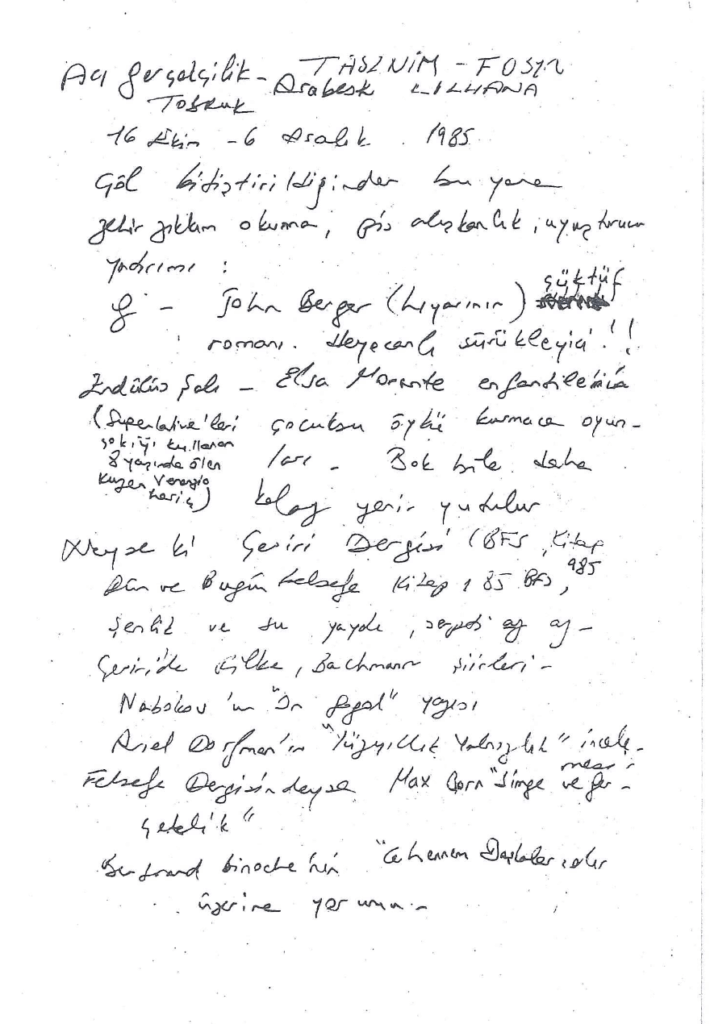Share this Collection
1 Citation in this Annotation:
Annotated by:
Yagmur Kültür on Kırmızı Kahverengi Defter
25 August, 2025
I was not sure what to expect when I first looked through the collected writings of Nilgün Marmara, published under the name of Kırmızı Kahverengi Defter years after her death. The translation of the title would be Red Brown Notebook, referring to the two leather covered notebooks that Nilgün Marmara owned and used not as diaries but rather – I believe – as a place to jot down mindlessly.
Her writings shift swiftly from comments and ideas on the media and literature she encountered to the descriptions of her state of mind, evoking a feeling of wandering inside her thoughts. At times, these elements even collide, making the text difficult to follow or fully grasp. Confronting Nilgün Marmara’s original handwriting heightens this sense of wandering, as the book presents the pages in sequence from the original notebooks alongside their transcripts, with even spelling mistakes left uncorrected and some sentences remained unfinished.
While describing her state of mind, Marmara draws on spatial experiences, architectural elements, and geometric forms. Such references blur the boundary between the real and the abstract, creating a sense of disorientation. Labyrinths and walls stand out in her writings, as they appear again and again like recurring motifs. The desert and the sea also return frequently, serving as settings for her narration. Yet there is no clear flow or order— she borrows these elements only to leave a certain impression. At times, she relies on sensory fragments such as pressure, smell, or noise; at others, she assembles a collage of film scenes, juxtaposing fragments as if caught between one director’s world and another’s.
The sceneries she generates through spatial elements are often unsettling, reflecting her inner world. Among them, her narration of an earthquake—as never-ending, irreversible, and widespread, with no windows that could be opened—was the most disturbing for me. This image becomes even heavier in the Turkish context, where earthquakes are a collective trauma—one that still wakes me in the middle of the night with the illusion of shaking, even more often when I encounter related news from my home country.
